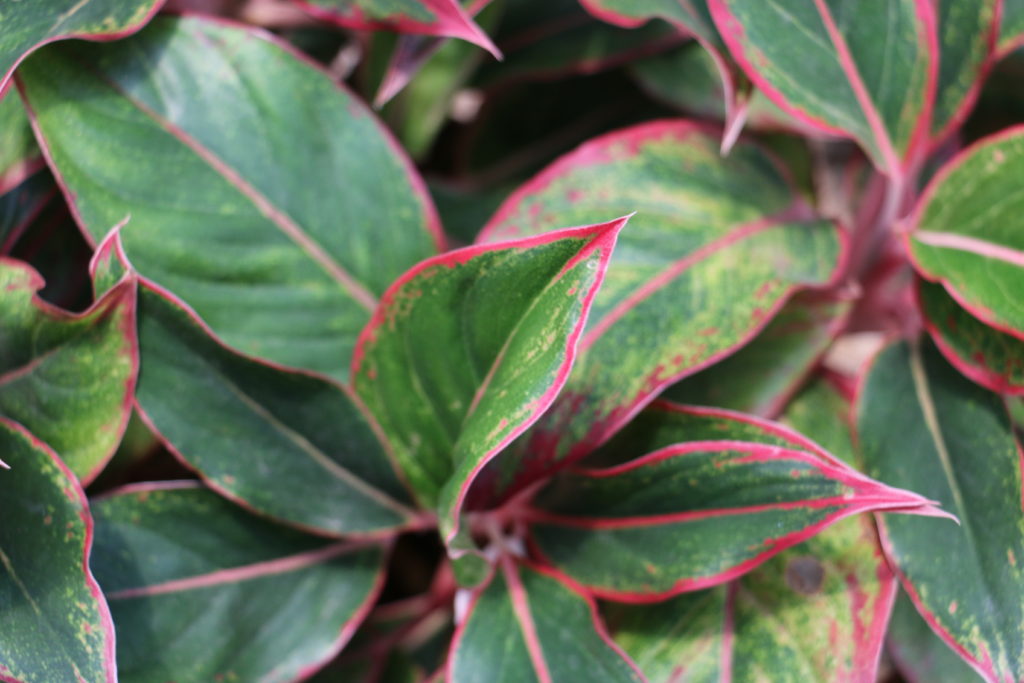Interior Landscaping and the Aglaonema: A Flourishing Choice for Indoor Spaces
In the world of interior design, the concept of interior landscaping—integrating plants and greenery into indoor spaces—has gained significant traction. Not only does it breathe life into otherwise sterile environments, but it also offers a host of benefits ranging from improved air quality to enhanced mood and productivity. Among the array of plants available for indoor gardening, the Aglaonema stands out as a particularly versatile and attractive choice. This article explores the appeal of interior landscaping and delves into why Aglaonema is an exceptional plant for enhancing indoor spaces.
The Art and Science of Interior Landscaping
Interior landscaping involves incorporating plants and greenery into indoor spaces to create a harmonious, natural environment. This practice can transform homes, offices, and commercial spaces into vibrant, healthier places. Plants can soften harsh architectural lines, add color and texture, and even contribute to a sense of well-being.
Benefits of Interior Landscaping:
- Improved Air Quality: Plants absorb carbon dioxide and release oxygen, which can enhance indoor air quality. Many plants also filter pollutants and toxins, contributing to a healthier living environment.
- Enhanced Aesthetics: Incorporating plants into interior design can add visual interest and create focal points. They can complement various decor styles, from modern to rustic.
- Increased Productivity and Mood: Studies have shown that exposure to greenery can boost mood and productivity. Plants can reduce stress and anxiety, leading to a more pleasant and efficient workspace or living area.
- Natural Humidification: Plants release moisture into the air through a process called transpiration, which can help maintain indoor humidity levels and prevent dryness.
The Aglaonema: A Plant for All Seasons

Aglaonema, commonly known as Chinese Evergreen, is an ideal candidate for interior landscaping due to its numerous advantages. Native to Southeast Asia, Aglaonema is cherished for its striking foliage, ease of care, and adaptability. Here’s why Aglaonema deserves a spot in your indoor garden:
1. Stunning Varieties and Foliage:
Aglaonema plants are celebrated for their beautiful and diverse foliage. They come in various colors and patterns, including shades of green, silver, red, and pink. The leaves can be solid, speckled, or striped, offering an array of visual options to complement any decor. This versatility makes Aglaonema an excellent choice for adding a splash of color and texture to indoor spaces.
2. Low Maintenance:
One of the key reasons Aglaonema is popular among indoor gardeners is its low-maintenance nature. These plants thrive in low to moderate light conditions, making them suitable for spaces with less natural light. They are also relatively forgiving when it comes to watering, tolerating occasional lapses in care. This makes Aglaonema an excellent choice for busy individuals or those new to plant care.
3. Adaptability:
Aglaonema is highly adaptable to various indoor environments. Whether in a bright living room, a dim office corner, or even a bathroom with moderate humidity, Aglaonema can flourish. Its ability to tolerate a range of conditions makes it a reliable choice for different spaces.
4. Air-Purifying Qualities:
Like many indoor plants, Aglaonema contributes to improved air quality. It has been shown to filter out common indoor pollutants such as formaldehyde, benzene, and trichloroethylene. By incorporating Aglaonema into your interior landscaping, you not only enhance the aesthetics but also contribute to a healthier indoor environment.
Caring for Aglaonema: Tips for Success
Although Aglaonema is relatively easy to care for, some basic guidelines can help ensure your plant thrives:
- Light Requirements:
Aglaonema prefers indirect light but can tolerate low light conditions. Avoid placing it in direct sunlight, which can scorch the leaves. For optimal growth, place your Aglaonema in a spot with filtered light or in a room with artificial light if natural light is limited. - Watering:
Watering needs for Aglaonema are modest. Allow the top inch of soil to dry out between waterings. Overwatering can lead to root rot, so ensure that the pot has good drainage. During the winter months, reduce watering frequency as the plant’s growth slows down. - Humidity and Temperature:
Aglaonema prefers moderate to high humidity but can adapt to average indoor humidity levels. It thrives in temperatures ranging from 65°F to 80°F (18°C to 27°C). Protect it from cold drafts and sudden temperature changes. - Soil and Fertilization:
Use a well-draining potting mix, such as a peat-based blend with added perlite or sand for aeration. Fertilize Aglaonema every 6-8 weeks during the growing season (spring and summer) with a balanced, water-soluble fertilizer. Reduce feeding during the winter months. - Pruning and Maintenance:
Remove any yellowing or dead leaves to maintain the plant’s appearance and health. Aglaonema generally requires minimal pruning, but occasional trimming can help shape the plant and encourage bushier growth.
Integrating Aglaonema into Your Interior Landscape
Aglaonema can be used in various ways to enhance your interior landscape:

- Accent Plants: Place Aglaonema in decorative pots or planters to serve as eye-catching accents in living rooms, offices, or entryways.
- Groupings: Create plant groupings with Aglaonema and other complementary plants to form lush, multi-layered displays.
- Functional Decor: Use Aglaonema in spaces where it can contribute to both aesthetics and air quality, such as near seating areas or workstations.
In conclusion, interior landscaping is an artful way to enhance indoor spaces, and the Aglaonema offers an ideal plant choice due to its stunning foliage, low maintenance, adaptability, and air-purifying qualities. By incorporating Aglaonema into your indoor garden, you can enjoy a vibrant, healthier, and more harmonious living or working environment. Embrace the beauty and benefits of interior landscaping with Aglaonema, and watch your indoor space flourish. Call Plantkeeper Today to see how we can add one of these plants to your collection.
